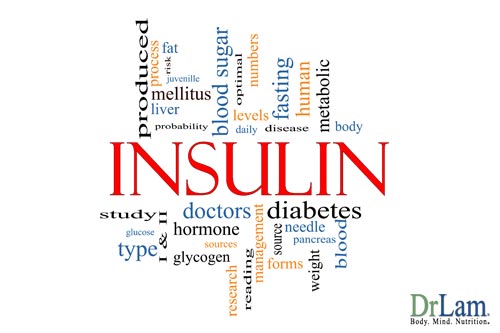 Scientists have known that calorie restriction, when accompanied by optimum nutrition (also known as C.R.O.N.) can extend lifespan of animals 30 to 230 %, depending on the species. Primate studies are in process. It will be another 10 years before we known the final results, and no doubt, results will then lead to even more questions. What we do know, from major studies of centenarians already underway, is that the demographics have nothing much in common. Many centenarians are smokers, for example. They come from all over the world without favoring any geographic location in particular. However, there are 3 consistent blood metabolic indicators of all centenarians that are relatively consistent: low sugar, low triglyceride, and low insulin. All three are relatively low for age. Among these three variables insulin is the common denominator. The level of insulin sensitivity of the cell is one of the most important markers of lifespan. Many lifestyle factors can contribute to a resistance to insulin, so in this article, we will go into what exactly this means, what it affects, and how to reverse insulin resistance naturally.
Scientists have known that calorie restriction, when accompanied by optimum nutrition (also known as C.R.O.N.) can extend lifespan of animals 30 to 230 %, depending on the species. Primate studies are in process. It will be another 10 years before we known the final results, and no doubt, results will then lead to even more questions. What we do know, from major studies of centenarians already underway, is that the demographics have nothing much in common. Many centenarians are smokers, for example. They come from all over the world without favoring any geographic location in particular. However, there are 3 consistent blood metabolic indicators of all centenarians that are relatively consistent: low sugar, low triglyceride, and low insulin. All three are relatively low for age. Among these three variables insulin is the common denominator. The level of insulin sensitivity of the cell is one of the most important markers of lifespan. Many lifestyle factors can contribute to a resistance to insulin, so in this article, we will go into what exactly this means, what it affects, and how to reverse insulin resistance naturally.
When we eat, the food we consume turns into sugar once inside the body. This is particularly true of carbohydrates such as potatoes or rice. This sugar circulates within us, and under the influence of insulin, is absorbed into the surrounding cells and tissue where it is metabolized into energy, or in the case of excessive sugar, stored for future use.
Insulin is commonly known as a hormone secreted by the beta cells of the pancreas that lowers the blood sugar by promoting their transport from the blood stream to the cell. Cells, in turn, use sugar as fuel to generate ATP, the energy currency of the body. Insulin's real purpose in our body is to help the body store excess nutrients.
When we take in excessive sugar and once the body senses that there is too much then insulin is released to take the excess sugar out of the bloodstream and store it by converting it into glycogen. The amount of glycogen stored in the liver is small. The entire reserve cannot last more than a day of activity. Excess sugar above and beyond what can be stored as glycogen is then stored as palmitic acid, a saturated fatty acid. Now you see how excessive sugar (calorie) intake leads to extra fat in the body.
Carbohydrates we eat fall into two groups -complex and refined. Examples of complex carbohydrates include whole grains, vegetables, whole fruits, nuts, and legumes. Legumes, in particular can help reverse insulin resistance naturally. Examples of refined carbohydrates include white flour, white rice and sugar. 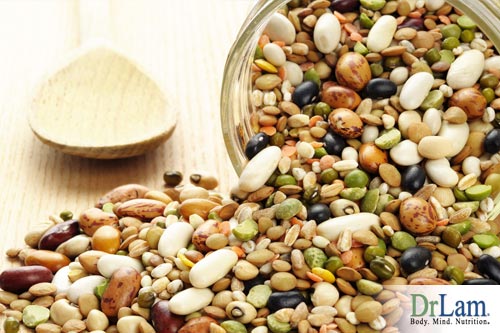 All carbohydrates are broken down into sugar once inside the body. Some are broken down slower than the others. The ones that break down slowly are called low-glycemic carbohydrate, such as legumes, apples, cherries, above ground vegetables. Other carbohydrates break down faster into sugar. These are called high glycemic carbohydrates. Examples are wheat, rice, tubers vegetables (potatoes), watermelon, and banana.
All carbohydrates are broken down into sugar once inside the body. Some are broken down slower than the others. The ones that break down slowly are called low-glycemic carbohydrate, such as legumes, apples, cherries, above ground vegetables. Other carbohydrates break down faster into sugar. These are called high glycemic carbohydrates. Examples are wheat, rice, tubers vegetables (potatoes), watermelon, and banana.
Excessive consumption of high glycemic index carbohydrate causes the most sugar storage in the body. Excessive intake of all carbohydrate, especially the high-glycemic type, is the primary culprit in the development of insulin resistance making the process to reverse insulin resistance naturally.
Carbohydrates, once broken down into sugar inside the body, promote insulin release from the pancreas. Each time there is a surge of sugar in the diet (as in taking a big bowl of noodles), there is a corresponding surge in blood sugar, and an immediate surge in insulin as the body tries to move the excessive sugar out from the blood and store it somewhere else. This process is an automatic one as the body balances itself to maintain a constant blood sugar level.
While sugar is a good source of energy, it was never designed to be the primary source of energy. Sugar is meant to be an emergency short-term fuel, like when you are running away from a tiger. Yes, our brain will burn sugar for energy, but it doesn't have to. It can do very well by burning ketones from fats. Fats and triglyceride can then be converted into sugar for emergency use. The body prefers using fat as the energy source.
Furthermore, the body can survive very well without simple refined carbohydrates provided that adequate protein and fat is on board to provide the calories required for metabolic functions. Our body is designed to run on fats as a fuel, not sugar. In fact, excess sugar is stored as fat because fat is the preferred source of fuel. The body can store a lot of fat but only a limited amount of sugar.
Sugar is a recognized toxin as far as the body is concern if present in excessive amounts. The body's job is to get rid of these excessive sugars and the best way to do that is to is to burn it. What the body cannot burn will be stored as glycogen. When that fills up it turns it into fats. When you eat sugar, the body will burn sugar first and you stop burning fat. First sugar from the blood stream will be used, and then stored sugar in the form of glycogen is next. Last, sugar from the muscle will be used. When these supplies are exhausted, energy is obtained from burning the saturated fats in our adipose that originated as sugar.
When you take a high carbohydrate diet such as pasta, the carbohydrate changes into sugar inside our body. Our blood sugar goes up quickly. The body does not welcome this rush and it panics. The pancreas is immediately signaled to release insulin in order to facilitate the movement of sugar away from the blood stream into the cell, thereby lowering the blood sugar. This reaction is a backup plan for something that should not happen too often in our body, as our body was never designed to process sugar in large quantities in a short time. What needs to be looked at is a way to reverse insulin resistance naturally.
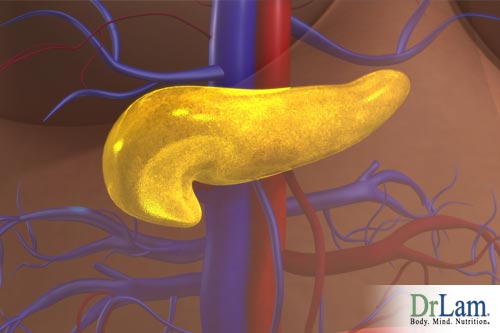 Boosting the pancreas is a huge factor in helping to reverse insulin resistance naturally. The pancreas tries to do its best to lower sugar through the release of the hormone insulin. But it generally overcompensates and secretes more than we need at times, especially when the pancreas is chronically stressed. The result - your blood sugar goes down excessively. At this time, our body secretes sugar-raising hormones such as cortisone and epinephrine to raise the blood sugar back up to normal level as a compensatory mechanism. This yo-yo effect happens each time there is a sudden sugar load, and it is one of the biggest stressors in our body. With the release of sugar raising hormones, our blood sugar is finally stabilized, but it comes at a price. The epinephrine makes us nervous. It also stimulates the heart to beat faster. Cortisol is a catabolic hormone and causes breakdown of peripheral tissues. This yo-yo effect of unstable blood sugar signals the brain to crave more carbohydrate as a way to increase sugar anyway it can for survival, not knowing what is coming next. Signals from the brain create a craving soon after a meal is finished, telling us to eat more carbohydrate, like a big bowl of cheerios, or a pie between meals. This, in turn, causes a surge in our blood sugar. This never ending vicious cycle of sugar feeding on more craving on sugar turns our body into a carbohydrate addict and makes us fat.
Boosting the pancreas is a huge factor in helping to reverse insulin resistance naturally. The pancreas tries to do its best to lower sugar through the release of the hormone insulin. But it generally overcompensates and secretes more than we need at times, especially when the pancreas is chronically stressed. The result - your blood sugar goes down excessively. At this time, our body secretes sugar-raising hormones such as cortisone and epinephrine to raise the blood sugar back up to normal level as a compensatory mechanism. This yo-yo effect happens each time there is a sudden sugar load, and it is one of the biggest stressors in our body. With the release of sugar raising hormones, our blood sugar is finally stabilized, but it comes at a price. The epinephrine makes us nervous. It also stimulates the heart to beat faster. Cortisol is a catabolic hormone and causes breakdown of peripheral tissues. This yo-yo effect of unstable blood sugar signals the brain to crave more carbohydrate as a way to increase sugar anyway it can for survival, not knowing what is coming next. Signals from the brain create a craving soon after a meal is finished, telling us to eat more carbohydrate, like a big bowl of cheerios, or a pie between meals. This, in turn, causes a surge in our blood sugar. This never ending vicious cycle of sugar feeding on more craving on sugar turns our body into a carbohydrate addict and makes us fat.
The cycle of sugar spikes mentioned above cannot go on forever. Each time it happens, the body is stressed. In response, the body puts out anti-stress hormones from the adrenals called cortisol. In time, the adrenals become exhausted from this production, just as the pancreas is exhausted from the constant insulin output which it is not able to keep up with. A metabolic dysfunction is created. The pancreas takes a beating and ultimately becomes exhausted. When this happens to the pancreas, the amount of insulin secretion is reduced and resulting high blood sugar rises out of control, creating a condition called adult onset diabetes mellitus (also called Type 2 diabetes) that affects over 16 million Americans. This is why it is so important to find a way to reverse insulin resistance naturally.
While the pancreas is being stressed, the adrenal glands are also becoming exhausted from putting ever increasing amount of cortisol needed to raise blood sugar from the transient hypoglycemic episode after each high carbohydrate meal. The result is adrenal exhaustion. The production of cortisol and a wide variety of sex hormones, including progesterone, is reduced as well. The symptoms include chronic fatigue, hormonal imbalance, estrogen dominance, and reduced sex drive, among many other symptoms.
But before we get to this stage of exhaustion both in the adrenals and the pancreas, the cell has a self-protecting mechanism in place. It has an internal braking mechanism. This is a protective function to avoid the toxic effects of high insulin and high sugar. The cell is trying to close itself from the entry of sugar and glycogen. In other words, the cell, when flooded with insulin chronically, start to down-regulate itself and start shutting itself off from responding to insulin.
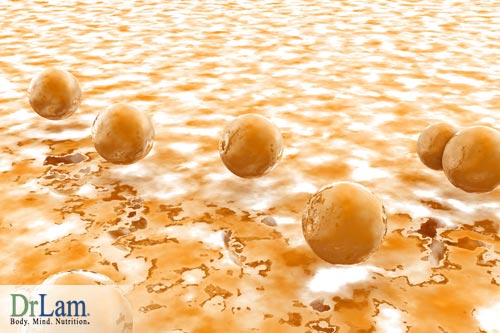 Their receptor activities and the number of receptors decrease so they don't have to deal with the undesirable insulin effect. Instead of following insulin's instruction to allow sugar into the cell, they refuse to listen to insulin's command and keep the sugar out. In this state, the blood insulin level is high as the pancreas is on an overdrive to produce more insulin. The blood sugar level is also high as the cells refuse the entry of sugar. This state is called insulin resistance. It is the fundamental a metabolic dysfunction, and may be considered a pre-diabetic state. This state of insulin resistance alone, evidenced by a high blood sugar level and high blood insulin level, is commonly known as Syndrome X or Metabolic Syndrome, is accompanied by other hyperinsulinemia symptoms such as high blood pressure, high LDL "bad" cholesterol, low HDL "good" cholesterol, and high triglyceride. However, it is important to note that not all people who have high insulin and high blood sugar level have Syndrome X.
Their receptor activities and the number of receptors decrease so they don't have to deal with the undesirable insulin effect. Instead of following insulin's instruction to allow sugar into the cell, they refuse to listen to insulin's command and keep the sugar out. In this state, the blood insulin level is high as the pancreas is on an overdrive to produce more insulin. The blood sugar level is also high as the cells refuse the entry of sugar. This state is called insulin resistance. It is the fundamental a metabolic dysfunction, and may be considered a pre-diabetic state. This state of insulin resistance alone, evidenced by a high blood sugar level and high blood insulin level, is commonly known as Syndrome X or Metabolic Syndrome, is accompanied by other hyperinsulinemia symptoms such as high blood pressure, high LDL "bad" cholesterol, low HDL "good" cholesterol, and high triglyceride. However, it is important to note that not all people who have high insulin and high blood sugar level have Syndrome X.
The difference between adult onset diabetes mellitus (also called Type 2 diabetes) and insulin resistance is simple. The key problem leading to type 2 diabetes is insulin resistance coupled with the inability to secrete enough insulin to overcome that resistance.The blood sugar level is high due to insufficient insulin. With insulin resistance, both blood sugar levels and blood insulin levels are high. Type 2 Diabetes is the end stage result of metabolic dysfunction in the processing of sugar in our body.
Different cells respond to insulin differently. Some cells are more resistant than others, as some cells are incapable of becoming very resistant. The liver becomes resistant first, followed by the muscle tissue and lastly the fats.
The sugar in our blood is determined by the amount we eat from our diet and the amount of sugar from the liver. During the night, in the case of insulin resistance, the liver is putting out sugar as a way to keep the body going, as it is not listening to the command of insulin. In the morning, the fasting blood sugar is therefore elevated. In the muscles, insulin resistance means that sugar is not transported into the muscle cells for metabolism and energy generation. More sugar is therefore outside, further contributing to an increase in blood sugar.
The more you expose the cell to insulin, the more the cell becomes insulin resistance in a bid to protect itself. This process progresses through life as our cells progressively become more insulin resistant. It cannot be avoided, and that is why one of the prominent signs of aging is insulin resistance. Those who are able to reduce the rate of insulin resistance will live longer. In other words, the rate of insulin resistance determines our rate of aging.
When the cell resists insulin to come in, the insulin level outside the cell increases. This increased circulating insulin level has many negative effects, including the following:
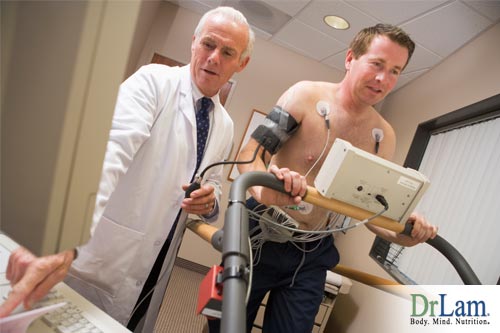
 Reduced Sexual Function. Insulin helps control the manufacture of cholesterol that is the precursor of all sex hormones, including estrogen, progesterone, and testosterone, and DHEA. The more insulin resistance, the lower the DHEA level
Reduced Sexual Function. Insulin helps control the manufacture of cholesterol that is the precursor of all sex hormones, including estrogen, progesterone, and testosterone, and DHEA. The more insulin resistance, the lower the DHEA level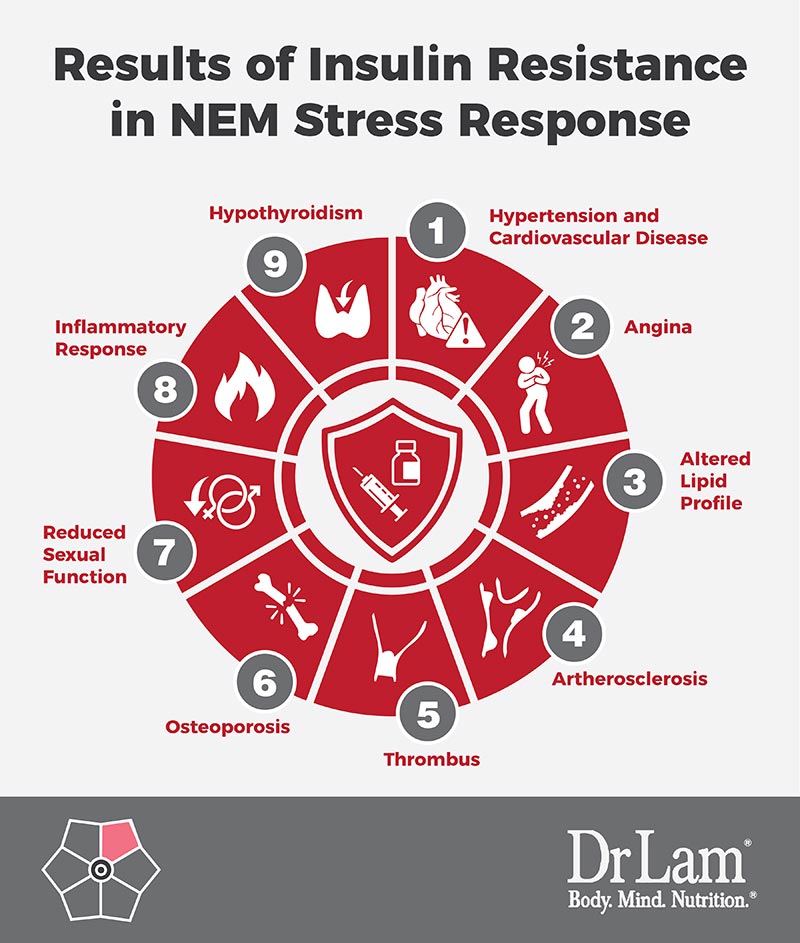
Insulin resistance is a reversible condition. Follow these steps:
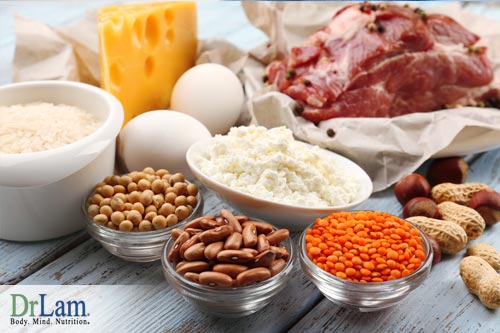 Protein use is not encouraged because its breakdown product, amino acid, enhances insulin secretion. Fats do not do this. Excessive proteins also cause acidity in the body. If you eliminate the need to burn sugar, you don't need much sugar in your diet even if you are insulin resistant. Therefore, you want to convert from a sugar burner to a fat burner. Carbohydrates are still necessary (40% of calories), but you have chosen the right kind - low glycemic complex carbohydrates such as green leafy vegetables. Get 45% of your calories from fats (mostly unsaturated), but not from saturated fats. It should be a low saturated fat diet because we already have a plentiful supply. Focus on mono-unsaturated fat such as that from olive oil and nuts.
Protein use is not encouraged because its breakdown product, amino acid, enhances insulin secretion. Fats do not do this. Excessive proteins also cause acidity in the body. If you eliminate the need to burn sugar, you don't need much sugar in your diet even if you are insulin resistant. Therefore, you want to convert from a sugar burner to a fat burner. Carbohydrates are still necessary (40% of calories), but you have chosen the right kind - low glycemic complex carbohydrates such as green leafy vegetables. Get 45% of your calories from fats (mostly unsaturated), but not from saturated fats. It should be a low saturated fat diet because we already have a plentiful supply. Focus on mono-unsaturated fat such as that from olive oil and nuts.Available information and clinical experience suggests that some substances can reverse insulin resistance naturally. Minerals, including magnesium, calcium, chromium, and vanadium, appear to have associations with insulin resistance or its management. Amino acids, including L-carnitine, also might play a role in the reversal of insulin resistance. Additional nutrients such as coenzyme Q10, and lipoid acid appear to have therapeutic potential.
Chromium is an essential trace mineral nutrient. Like iron, zinc, selenium, copper, and several other essential trace minerals, chromium plays a critical role in maintaining normal health and well being.
Chromium helps insulin to work efficiently. Many well-controlled clinical studies through the years show blood glucose improvements in the patients tested.
Important studies include one from the Human Nutrition Research Center of the United States Department of Agriculture conducted in 1996. Researchers in the study randomized 180 adult-onset diabetics into 3 groups of 60 each: one group received placebo twice per day, the second received 100 mcg twice daily of chromium as chromium picolinate and the third received 500 mcg of chromium as chromium picolinate twice daily. Their blood work was examined at baseline, at 2 months and at 4 months. The patients were told to remain on their anti-diabetic medications and continue with their diets and activity levels as before. The results were impressive: blood glucose, insulin levels, cholesterol and Hemoglobin A1C all decreased, with the higher dose generally (but not always) more effective than the 200 mcg.
Few foods are rich sources of chromium in the Western diet, the best being organ meats, mushrooms, wheat germ, broccoli and processed meats. Data from U. S. Government sources show that the great majority of Americans get less chromium in their daily diets than the amount recommended by nutrition experts. The RDA Committee recommends 50-200 mcg of chromium/day; the vast majority of Americans get less than 50 mcg/day. It is estimated that as high as 80% of all Americans is deficient in this mineral and may not know it.
Unfortunately, it is not possible to get enough chromium by food alone without excessive calories and obesity. To obtain 200 mcg by food alone, one has to take in over 8,000 calories a day. A large part of the problem has to do with processed food and the increase consumption of sugar. The modern American consumes an average of 120 pounds of sugar per year from all sources. These ingested sugars (such as table sugar and products made with it) bring insulin and chromium into the blood and cause chromium to be excreted in the urine after it's through working with the insulin on the increase in blood sugar.
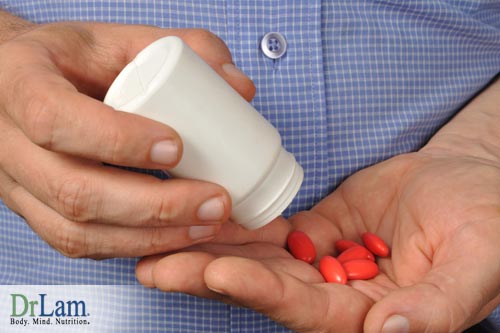 Inadequate chromium intakes from processed food, increased chromium losses due to increased sugar consumption, decreasing chromium tissue levels as we age are the main reasons as to why the majority of Americans and diabetics are deficient in chromium. Improvements in blood sugar in significant numbers of diabetics and pre-diabetics with modest chromium supplementation were observed to help reverse insulin resistance naturally. It should, however, take place alongside the two other proven ways of normalizing sugar: low-fat, high complex-carbohydrate of low glycemic index type diets for weight loss/weight maintenance and regular exercise.
Inadequate chromium intakes from processed food, increased chromium losses due to increased sugar consumption, decreasing chromium tissue levels as we age are the main reasons as to why the majority of Americans and diabetics are deficient in chromium. Improvements in blood sugar in significant numbers of diabetics and pre-diabetics with modest chromium supplementation were observed to help reverse insulin resistance naturally. It should, however, take place alongside the two other proven ways of normalizing sugar: low-fat, high complex-carbohydrate of low glycemic index type diets for weight loss/weight maintenance and regular exercise.
Deciding whether or not someone is chromium deficient cannot be done easily. Routine blood test is generally not accurate. The only generally accepted method for assessment of chromium status is to supplement an individual who has abnormalities of blood sugar, cholesterol, triglycerides or all three with the trace clement. If the laboratory values improve, then chromium insufficiency is presumed.
Chromium comes in various forms. The dietary form is called chromium tri-valent. This is non-toxic and necessary for essential body function. Chromium in its hexa-valent form is used in industries and is highly toxic.
It is extremely difficult to poison laboratory animals with oral dietary tri-valent form of chromium. For example, cats fed 1,000 mg of trivalent chromium per day showed no signs of toxicity. The equivalent daily dose for a 150 lb person would be approximately 35,000 mg per day or 3.5 million mcg per day. In terms of the number of 200 mcg tablets, this would be 175,000 tablets per day for a human.
There are various forms of dietary chromium. These vary in bioavailability (absorption and retention) and biological activity (ability to potentate and harmonize insulin). Inorganic chromium such as chromium chloride is unfortunately poorly absorbed (0.5-2%) and has little effect on insulin because it must first be converted into a biologically active form, which the body has a limited ability to do.
The two most popular forms of organic chromium are niacin-bound chromium (also called chromium polynicotinate) and chromium picolinate. Although picolinate and polynicotinate sound alike, there are significant differences between the two compounds.
Chromium Polynicotinate is actually a family of niacin-bound chromium compounds. Niacin-bound chromium strongly potentiates insulin - chromium's most vital function - while chromium picolinate is less effective comparatively speaking.
Niacin-bound chromium such as chromium polynciotinate is also more bioavailable than chromium picolinate. An Animal study at the University of California found that chromium polynicotinate is better absorbed and retained up to 311% better than chromium picolinate and 672% better than chromium chloride. Such high bioavailability means that chromium polynicotinate can deliver more benefits that chromium has to offer and be a potential possibility to reverse insulin resistance naturally.
Magnesium: A deficiency in magnesium is a common occurrence in patients with insulin resistance, especially those with hypertension.
Some doctors have discovered that among normotensive and hypertensive patients, a higher magnesium level corresponded to a greater degree of sensitivity to insulin. Magnesium deficiency results in impaired insulin secretion and magnesium replacement restores insulin secretion.
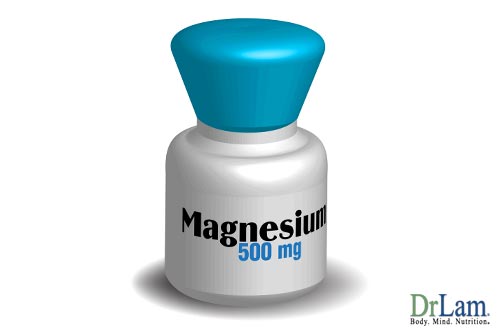 In developed countries, magnesium seems to be lacking in a large majority of the population. The recommended daily allowance for magnesium is 350 mg a day. In America, 80% of the population fails to meet this standard. The recommended dose is 500 to 1,000 mg, while maintaining a magnesium: calcium ratio of 1:1.
In developed countries, magnesium seems to be lacking in a large majority of the population. The recommended daily allowance for magnesium is 350 mg a day. In America, 80% of the population fails to meet this standard. The recommended dose is 500 to 1,000 mg, while maintaining a magnesium: calcium ratio of 1:1.
Calcium: Calcium supplements have been found to be effective in some cases. An experiment comprising of 20 non-diabetic and hypertensive subjects was conducted. Subjects were given standardized diets consisting of 500 mg of dietary calcium per day for a period of four weeks. Following this period, another 1,500 mg of calcium or placebo was given daily in a randomized, double blind fashion for another eight weeks. After this intervention period, treated patients were found to have decreased fasting plasma insulin levels and a significant increase in insulin sensitivity.
This is another trace mineral associated with sugar regulation.
Vanadium or vanadyl sulfate regulates fasting blood sugar levels and improves receptor sensitivity to insulin. It is an effective mineral for treating type 2 diabetic individuals with insulin resistance.
Boden et al conducted a single-blinded, placebo-controlled study on the effects of vanadyl sulfate on eight male and female subjects with type 2 diabetes. The subjects were given 50 mg of vanadyl sulfate twice a day for a period of four weeks, followed by a four-week placebo phase. The results showed slight improvements in fasting glucose and hepatic insulin resistance following the treatment period and being able to help reverse insulin resistance naturally. However, the level of insulin resistance was maintained throughout for those on the placebo.
In another study, Halberstam et al gave 100 mg of vanadyl sulfate daily for three weeks to obese type 2 diabetic patients as well as non-diabetic subjects. There was a significant decrease in fasting plasma glucose and a significant improvement in insulin sensitivity in the treated patients. There was, however, no change detected in the obese non-diabetic subjects.
Cohen et al also looked into the effects of vanadyl sulfate at 100 mg daily in type 2 diabetic patients following a three-week intervention period. His results showed a beneficial effect of vanadyl sulfate on improving both hepatic and peripheral insulin sensitivity and assisting to reverse insulin resistance naturally. These effects were even sustained for another two weeks after the vanadyl sulfate supplements were stopped.
In another study, Halberstam et al gave 100 mg of vanadyl sulfate daily for three weeks to obese type 2 diabetic patients as well as non-diabetic subjects. There was an obvious decrease in fasting plasma glucose and a significant improvement in insulin sensitivity in the type 2 diabetic patients. There was, however, no change detected in the obese non-diabetic subjects who did not need to reverse insulin resistance naturally.
We get about 50 to 60 mcg of vanadyl sulfate via our diet. If we have diabetes, the dosage required may be 1000 times more to help reverse insulin resistance naturally.
Sad to say, the potency of vanadium compounds has not been extensively tested in clinical trials. The dosage recommended is therefore at 25 mg 1 to 3 times a day for a short-term use.
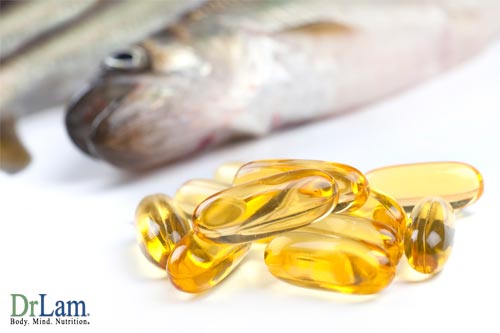 Omega-3 fatty acids reverse insulin resistance naturally at the cellular membrane by increasing the fluidity of the cell membrane. Omega-3 fatty acids also have endothelial membrane stability benefits and reduce inflammatory response.
Omega-3 fatty acids reverse insulin resistance naturally at the cellular membrane by increasing the fluidity of the cell membrane. Omega-3 fatty acids also have endothelial membrane stability benefits and reduce inflammatory response.
Fish oils is rich in omega-3 essential fatty acids (omega 3 EFAs) and its active ingredient EPA and DHA. Common fish oil capsules found in health food stores contain approximately 180 mg of DHA and 120 mg of EPA. 1,000-3,000mg of DHA/EPA from fish oil is recommended. If you don't like to take fish oil, consider eating Atlantic salmon, which contain about 2.5 grams of EPA/DHA per 4 oz serving. It is important to take some vitamin E along with omega-3 fatty acid to prevent fatty acid oxidation which can be counterproductive and show no help in being able to reverse insulin resistance naturally. If taking too much fish oil causes you to have a "fishy" burp, consider taking flaxseed. It also contain DHA and EPA, though at a much lower concentration.
Coenzyme Q10 (CoQ10) is a promising nutritional intervention for insulin resistance, at least among subjects with hypertension and shows to reverse insulin resistance naturally. Singh et al conducted an eight-week randomized, double blind trial comparing the use of a water-soluble form of CoQ10 (60 mg twice daily) to a vitamin B complex in 59 hypertensive patients. Their results indicated CoQ10 at this dose lowered glucose and fasting insulin levels, suggesting possible improved insulin resistance and ability to reverse insulin resistance naturally. CoQ10 supplementation also resulted in improvements in blood pressure, lipid profiles, and blood levels of the antioxidant vitamins A, C, E, and beta-carotene. Measured parameters associated with oxidative stress decreased with CoQ10 supplementation. The only observed change in the group taking the B-vitamin complex was increases in Vitamin C and beta-carotene.
High sugar level is a potent generator of free radicals. Vitamin C's antioxidative effect in mopping up unwanted free radical and preventing them from attacking the endothelium is well established. In addition to this, there is another important function of Vitamin C - that in the formation of critical collagens responsible for keeping the vascular system pliable and healthy. Vitamin C can also help to reverse insulin resistance naturally. In the blood vessel, collagen, together with elastic fibers, forms an integral part of the subendothelial connective tissue just below the endothelium ( a single layer of very thin squamous epithelial cell that lines all blood vessels), as well as the external elastic lamina. During the aging process the wear and tear of collagen fibers must be replaced and maintained. These three nutrients ensure that the substrates needed for optimum collagen building and maintenance are present. Furthermore, lysine and proline have unique features of having a high affinity for sticky lipoproteins. With high level of these two amino acids, plaques already formed can be dissolved and washed out of the body. The end result being healthier vascular walls and reduced risk of cardiovascular disease.
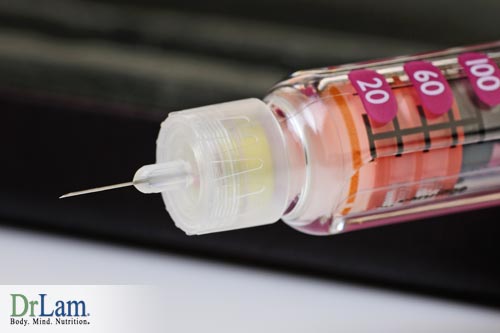 It is clear that insulin is a key determinant of the aging process and that it is important to reverse insulin resistance naturally. In fact, it determines more about aging than almost any other indicators we have. As we age, our insulin level increase. Those who can slow down the velocity of this process are in effect extending their longevity.
It is clear that insulin is a key determinant of the aging process and that it is important to reverse insulin resistance naturally. In fact, it determines more about aging than almost any other indicators we have. As we age, our insulin level increase. Those who can slow down the velocity of this process are in effect extending their longevity.
Fasting blood sugar, together with complete lipid profile, will give us a good status report on the level of insulin activity and insulin resistance in the body. It is associated with almost all chronic degenerative diseases, including hypertension, diabetes, cardiovascular disease, and stroke. Over 60 million Americans suffer from this a silent epidemic of massive proportions. Fortunately, we can reverse insulin resistance naturally through lifestyle adjustments, following a proper diet, exercise, and proper nutritional supplementation of various natural non-toxic compounds. Being able to reverse insulin resistance naturally is easier on the body especially for those suffering with AFS.
